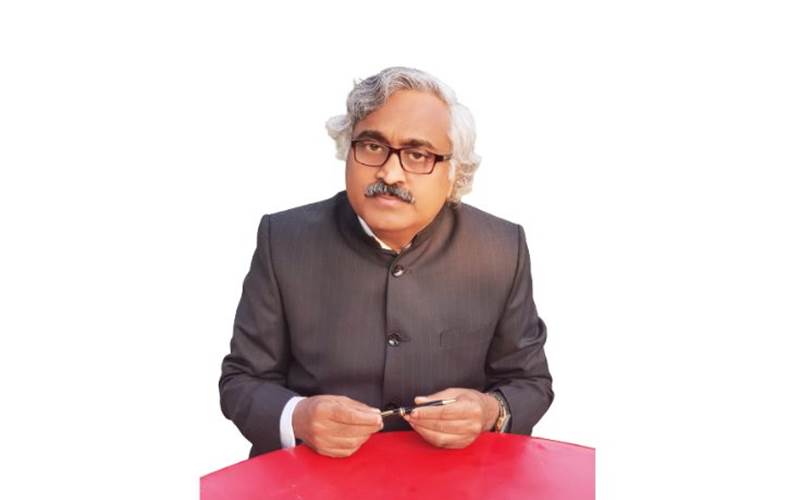It’s time we think of the new resources, expertise, vision: Dr Anayath
I am fortunate to be a part of the team that did a brainstorming a few years ago in bringing this signature title ‘Print and Beyond’ and this platform. Today we all came to a stage where we need to think much beyond ink and paper. We have to take pride that we became stronger and more influential as torchbearers of data, information and communication,” said Dr Rajendrakumar Anayath, vice-chancellor, DCRUST University.
27 Feb 2023 | By Ramu Ramanathan
He spoke virtually during the Print and Beyond seminar organised by the Kerala Master Printers Association (KMPA).
The print and packaging industry was hit hard by the pandemic, with disruptions in supply chains, shortages of raw materials, and a significant decrease in demand for services and products.
“However, I am pleased to say that the print industry has shown remarkable adaptability, creativity, and determination in navigating these challenges and finding innovative ways to keep moving forward,” he said.
Anayath said that today the industry and businesses have come to recognise the crucial role printers play in the economy. “Our responsibility has increased; so, have our challenges. It’s time we think of the new resources, expertise, vision, knowledge and training,” he said.
He also lauded KMPA for highlighting the sustainability aspect of printing and paper.
On the subject of sustainability, Anayath spoke about the circular economy, which can be a challenge as well as an opportunity. In the context of the debate over climate change, he asked, what can printers and packaging producers do?
He answered, “Well-designed, efficiently produced, appropriately used and responsibly disposed of packaging provides multiple benefits. It is essential to prevent product damage and help extend a product’s life. It helps improve efficiency in the supply chain and provides safe and convenient access to goods,” he said.
He added that while packaging communicates vital information to the customer whilst providing a great unboxing experience, poor material choices and improper value additions damage both brands and the planet.
“Here comes the importance of a circular economy. A circular economy is a systemic approach to economic development designed to benefit businesses, society, and the environment. In contrast to the take-make-waste linear model, the circular economy is regenerative by design and aims to gradually decouple growth from the consumption of finite resources,” he said.
For the packaging industry, this translates into a Reduce, Reuse, Recycle approach calling for new packaging structures that increase utilisation rates and recyclability of materials.
So, what is the appropriate action to support a circular economy? Anayath suggested four ways. One, incorporate reused materials and circularity potential at the design phase. Two, design to minimise energy use, emissions, consumables and product failure. Three, use data to develop service innovations. Four, maximise ease of recycling and recycled value of components.
The incorporation of non-virgin materials into packaging products is gathering pace, he said. An example is HP’s Elite DragonFly notebook, which uses 50% post-consumer recycled plastic, including 5% made from ocean-bound plastic, and Xerox, whose products contain up to 5% post-consumer recycled plastic content. “Manufacturers are focusing on designing products on a modular basis, with fewer parts overall and consideration given to end-of-life disassembly and reuse. In this way the value of raw materials is retained post-consumption,” he said.
Designing products that last longer and fail less often is another essential part of the rejection of the throwaway philosophy. This ranges from improving durability in existing products to a complete rethink of technology. “It’s time we have to understand these concepts first, we can always do things when we know the future,” he added.
Anayath said a key opportunity for driving circular advantage is applying intelligence to the wealth of data generated by smart or connected devices. There are IoT sensors which can deliver up-to-the-minute reporting on the status of assets, and enable real-time optimisation. This can help suppliers to develop support and maintenance programmes that minimise unnecessary interventions and ensure that products last longer and function efficiently.
Anayath also spoke about how the tangential growth of the economy is going to affect the print and packaging industry.
“Packaging not only protects, but it also sells. It is the ultimate touchpoint with customers for a brand. Every customer interacts with packaging, they can switch off a TV ad, close the window of a digital ad, flip a newspaper ad, or glance away from hoarding, but they can’t keep the packaging away, that’s the power of packaging. It is going to be a key medium for the future. It is growing and going to become complex too. So there lies the opportunity for my printer friends if you haven’t landed there yet. Never think of packaging as an easy task to win over, but presents myriads of opportunities. And there are virgin areas that businesses haven’t entered yet, for example — agri sector or fresh produce who need innovative packaging to preserve and sell their produce. There are immense opportunities if you offer the right solutions,” he said.
He added, “We are exponentially growing in the retail and Food sectors, which are major contributors for the Packaging, and there are many sunrise sectors coming up in India now. So as printers, big or small, you must understand the growth drivers and make investments early on to be there when this immense growth takes place. When I say investments, it is not just putting money in, you have to start with a vision and plans to realise them, acquire knowledge and expertise, ready the human resources, infrastructure, digital ecosystem, policies and ethical framework and much more. You can’t run a printing business without getting sufficient expertise and knowledge in the future. The list will go on.”












 See All
See All